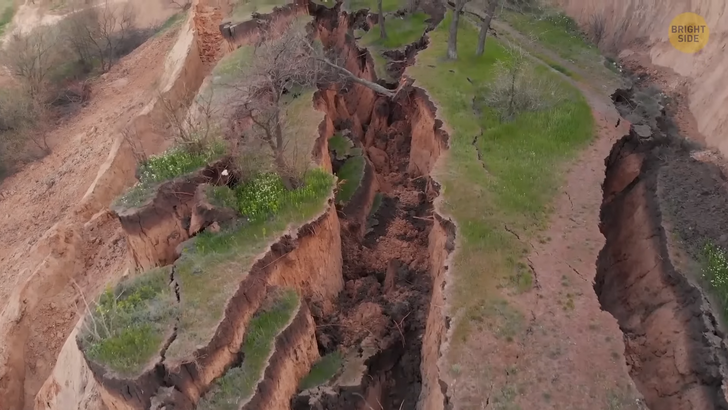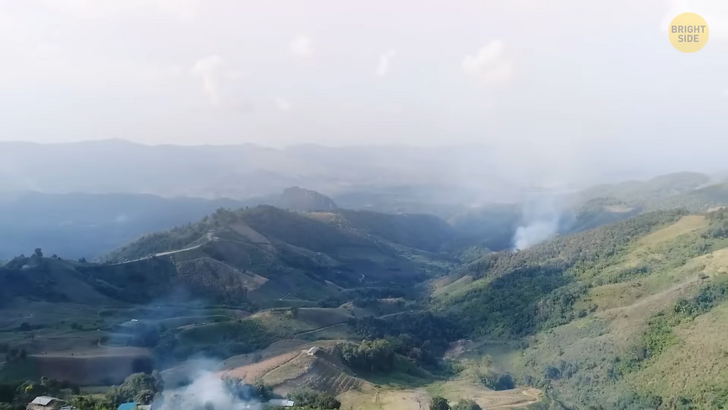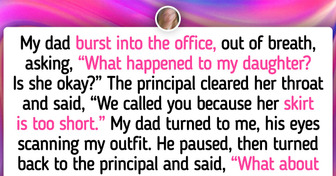14 Startling Stories From Shop Assistants That Astonished Them to the Core

Ahh, don’t you just love the smell of fresh air in the morning? Imagine you’ve just woken up and done your little morning stretch. You’re about to open your bedroom window to freshen the room up a bit when you notice your windows are stuck. Sure, if it’s wintertime, they might have got frozen overnight. But it can also mean something way more dangerous. Windows may get stuck before one treacherous natural phenomenon, which happens because of the changes in the soil and rock around your house. I’m talking about landslides.

They often cause a build-up of water in the soil, which can make the soil expand and put pressure on the building’s foundation. Even more, the shifting of soil and rock can also put stress on the building, causing windows to stick or become difficult to open. If you believe a landslide might happen soon, it is important to evacuate the area immediately and seek shelter.
Here are other signs you can look out for in case you’re not sure whether you are about to experience a landslide or not. For example, trees that, all of a sudden, take an odd shape. They can be bent because of the movement of soil in the direction of a slope failure. The tops of these trees may stay unchanged, but the roots are forced to bend in another direction. It can sometimes even cause trees to look J-shaped! This shape helps them stay upright and more or less stable despite the movement of the soil around them. If you’re also not sure if your area has landslide potential, here are some places that are most likely on this list.
For starters, hills that are very steep, especially at the bottom of valleys. Or places that have recently been through a fire. Then there are areas where people have changed the land a lot by cutting down trees or building too much at once. Banks of rivers or streams aren’t well-protected from landslides either, as the soil there is mushier.

You’ll be on the safe side if you know what signs to look out for to predict dangerous natural phenomena. Like when the sky turns a weird shade of green. People used to think that when the sky turned green, a tornado was about to happen. For the most part, that’s a myth. Scientists couldn’t find a direct connection between a green sky and a tornado. But it does mean you may be in for a pretty strong thunderstorm. Scientists have found out that large storm clouds can change the color of the sky to green. This mostly has to do with the way the light from the sun travels through the thick, moist atmosphere.
Should you ever experience rain when there are no clouds in the sky, don’t be scared. Weird as it may sound, on rare occasions, it can rain when the sky is clear. This event is called a sunshower. It makes people think rain is falling straight from the sun. In reality, there is no way rain can ever come down directly from a star. It’s an optical illusion. Rain clouds are just located at some distance from where you are. If the sun shines through them at just the right angle, they become invisible. Add a little wind to blow the rain in your direction, and that’s how you get sunshowers! However, don’t be tricked into thinking that just because it’s raining, you’re protected from the sun’s rays. Always wear sunscreen, even if there’s a light drizzle.

See these weird, square-looking waves? They might look cool in pictures, but they can be very dangerous. If you see square waves while swimming or surfing, you should get out of the water right away. They are often connected to strong and potentially dangerous currents. These waves can be so difficult to manage that they can cause problems for boats and ships, too. Some can be as high as 10 feet, and they can show up and disappear quickly near many beaches. The best place to see square waves is France — at Ré Island. But they can also be spotted in other places, like the South Pacific. Why do these waves happen in the first place? We see them when two waves from different seas or oceans hit each other at a 90-degree angle. This happens near the border between two seas or oceans or near a peninsula.
Animals can let us know ahead of time if something is about to go terribly wrong. And they don’t necessarily have to be our pets. In 2004, a big earthquake under the sea near Indonesia caused a huge tsunami. The wave destroyed many towns along the coast of the Indian Ocean. Many people did not get a heads-up because the warning systems for these types of events didn’t catch the signs in time. Some animals, however, like elephants and flamingos, seemed to know something bad was coming beforehand. They began to run away before the wave hit. In one village in Thailand, people said they had seen buffaloes run to high ground — and they immediately knew something was about to happen.

Scientists have known for a long time that animals are good at predicting dangerous natural phenomena. Take the writings of a historian named Thucydides [thoo·si·duh·deez], who, in 373 BCE, wrote about animals acting strange before a big earthquake that had destroyed an ancient Greek city. People also reported that before an earthquake happened in Naples in 1805, animals like oxen, sheep, dogs, and geese had begun making loud noises, and horses had bolted away. Something similar happened to the animals of San Francisco before the powerful earthquake of 1906.
Many theories have been presented over the years about this weird ability of animals to predict earthquakes. Some researchers noticed strange behaviors in animals up to 20 hours before the movement of the ground even started! Some believe that animals can feel the changes in the air because of the rocks moving in the area. As the rocks are pushed against each other in the days before an earthquake, they release minerals that go into the air. Since most animals have a better sense of smell than us humans, they might be able to figure out something’s up way in advance.

The human body may be able to alert us that something wrong is about to happen, too — but not in the way you might think. When we’re cold, our hairs stand up because small muscles at the base of each hair follicle squeeze together. This makes the skin look bumpy and helps trap the air to keep us warm. It happens to all animals with hair or fur — but for us, it doesn’t really do much because our body hair is too thin. The best way to stay warm is by shivering, which makes our muscles move quickly, warming us up. But your hair may stand up for another reason altogether. It may indicate that lightning is about to strike, and you need to look for shelter immediately. Before a lightning strike happens, an electric charge builds up. This is called a positive lightning strike. The electric charge makes our hair stand up. Even if a storm seems to be far away, this electric charge is a sign that you should go inside quickly.
If you smell smoke and feel the heat of the fire on your cheeks, it might mean your neighbors are having a barbecue. But before you invite yourself over, you might want to make sure there isn’t a wildfire close to your house.

Watch out for smoke and haze, and pay attention to animals leaving the area. Wildfires can cause a lot of damage, but not many people know how fast and unpredictable they can be. A small spark from a candle or campfire can start a huge fire that can burn thousands of acres of land. If the conditions are right, wildfires can spread quickly and block your way out of the house. You should get alerts from local authorities when a wildfire starts, but sometimes, you might not get the message in time, so it’s best to know what to look out for.











